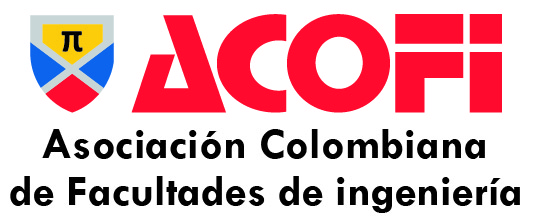Interactive environments in education. ¿Just a matter of technology?
DOI:
https://doi.org/10.26507/rei.v13n25.855Keywords:
ICT, interactive environments, learning process, meaningful learning, teaching.Abstract
The use of technology as a support for implementing didactic strategies is one of the areas with greatest growth today. However, technology alone is not enough to address the total learning process hence ignoring the complementary aspects can lead to solutions that do not achieve meaningfulness or permanence in learning. This article describes the design of interactive environments taking into account not only the technology, but also intentionality as to meaningfulness of the didactic strategies mediated by such environments. Strategies are designed based on the neurogenetic characteristics that underlie the learning process itself. The partial results obtained in pilot tests suggest that the environments developed in this way achieve a more meaningful and long-term learning, when measured in terms of interest, motivation and assimilation, with improvements that surpass 50% relative, normalized gains <g> between 0.42 and 0.8.Downloads
References
Kelly, R., 11° Ed. Tech Trends to Watch in 2017. [online]. Available at: https://campustechnology.com/articles/2017/01/18/11-ed-tech-trends-to-watch-in-2017.aspx, 2017.
Pelet, J., E-Learning 2.0 technologies and web applications in higher education advances, in: Higher Education and Professional Development, IGI Global, 2013.
Soledad, C., Sistemas inteligentes en la educación: Una revisión de las líneas de investigación y aplicaciones actuales. RELIEVE: 10(1), pp. 3-22, 2004.
Parra-Plaza, J.A., Aprendizaje significativo y sociedad del conocimiento. Órbita Científica, [en línea]. 22, 2016, Disponible en: http://rorbita.ucpejv.edu.cu/index.php/rOrb/article/view/223/html_6
Parra-Plaza, J.A., Propiciando el aprendizaje significativo en entornos interactivos mediante la inserción de moduladores neurogenéticos. Compdes, Guatemala, 2017.
Parra-Plaza, J.A., Mejora de la experiencia de videojugador usando inteligencia computacional biomolecular. X Congreso Internacional de Electrónica, Control y Telecomunicaciones, Bogotá, 2014.
Moore, B., The evolution of learning. Biol Rev Camb Philos Soc, 79(2), pp. 301-35, 2004. DOI: 10.1017/S1464793103006225
Ausubel, D., Educational psychology: A cognitive view, New York: Holt, Rinehart & Winston, 1968.
Parra-Plaza, J.A., Modelo didáctico basado en entornos interactivos enfocados hacia el aprendizaje significativo. II Congreso Internacional de Pedagogía, Didáctica y TIC aplicadas a la Educación, Bogotá, 2015.
Doyle, T. and Zakrajsek, T., The new science of learning: How to learn in harmony with your brain, Stylus Publishing, 2013.
Weber, B. and Depew, D., Evolution and learning: The Baldwin effect reconsidered (Life and mind: Philosophical issues in biology and psychology), Bradford Book, 2007.
Willingham, D., Why don't students like school?: A cognitive scientist answers questions about how the mind works and what it means for the classroom, Jossey-Bass, 2010.
Escohotado, A., Principios matemáticos de la filosofía natural - Isaac Newton, Tecnos, 2011.
van der Schaft, A., An introduction to hybrid dynamical systems, University of Twente, 1999.
Fradkin, A. Gabbe, B. and Cameron, P., Does warming up prevent injury in sport?. The evidence from randomised controlled trials. J Sci Med Sport, 9(3), pp. 214-220, 2006. DOI: 10.1016/j.jsams.2006.03.026
Eagleman, D., Incognito: The secret lives of the brain, Canongate Books, 2012.
Ausubel, D. Novak, J. and Hanesian, H., Educational psychology: A cognitive view, Holt, Rinehart & Winston, 1978.
Dennett, D., From bacteria to bach and back: The evolution of minds, W. W. Norton & Company, 2017.
Smith, D., Why we lie: The evolutionary roots of deception and the unconscious mind, St. Martin's Griffin, 2007.
McNally, L. and Jackson, A., Cooperation creates selection for tactical deception. Proceedings of the Royal Society B, 2013. DOI: 10.1098/rspb.2013.0699
Stewart, A. and Plotkin, A., From extortion to generosity, evolution in the Iterated Prisoner’s Dilemma. PNAS Early Edition. 110, pp. 15348-15353, 2013.
Kazi, S. and Harne, B., Statistical signal processing of EEG signals for lie detection. International Journal of Advanced Research in Electrical, Electronics and Instrumentation Engineering, 4(4), pp. 2654-2660, 2015. DOI: 10.15662/ijareeie.2015.0404116
Gramzow, R., Willard, G. and Mendes, W., Big tales and cool heads: Academic exaggeration is related to cardiac vagal reactivity. Emotion, 8(1), pp. 138-144, 2008. DOI: 10.1037/1528-3542.8.1.138
Pease, A. y Pease, B., El lenguaje del cuerpo, Amat Editorial, 2010.
Ekman, P., Nonverbal messages: Cracking the code, Paul Ekman Group, 2016.
Brain, S., Attention span statistics. [online]. Available at: http://www.statisticbrain.com/attention-span-statistics/, 2017.
Mark, G., Work, email, distraction, repeat: Switching tasks is ruining your workflow. [online]. Available at: https://rework.withgoogle.com/blog/switching-tasks-ruins-workflow/, 2017.
Sohlberg, M. and Mateer, C., Cognitive rehabilitation: An integrative neuropsychological approach, The Guilford Press, 2001.
Wamsley, E., Tucker, M., Payne, J., Benavides, J. and Stickgold, R., Dreaming of a learning task is associated with enhanced sleep-dependent memory consolidation. Current Biology May 11; 20(9), pp. 850-855, 2010. DOI: 10.1016/j.cub.2010.03.027
Stickgold, R. andWalker, M., Sleep-dependent memory triage: Evolving generalization through selective processing. Nature Neuroscience 16, pp. 139-145, 2013. DOI: 10.1038/nn.3303
Delgado, C., Nuevas tecnologías y zona de desarrollo próximo, Editorial Escuela Colombiana de Ingeniería, 2004.
Dayley, B., jQuery and JavaScript phrasebook, Pearson, 2014.
Dickey, J., Write modern Web apps with the MEAN stack: Mongo, Express, AngularJS, and Node.js, Pearson, 2015.
Nise, N., Control Systems Engineering, Wiley, 2015.
Herrmann, N., El libro de negocios de todo el cerebro, McGraw-Hill, 1996.
Huizinga, J., Homo ludens, Alianza Editorial, 2007.
Gómez, D., Estilos de aprendizaje en los estudiantes universitarios con base en el modelo de hemisferio cerebrales. Revista Académica de la Investigación, 11, pp. 2-23, 2012.
Carvajal, P. y Barros, A., Analisis estadístico multivariado de los estilos de aprendizaje predominantes en estudiantes de ingenierías de la Universidad Tecnológica de Pereira - II - II semestre de 2006. Scientia Et Technica, XIII (34), 2007.
Parra-Plaza, J.A., Inteligencia computacional fuertemente bioinspirada enfocada hacia el aprendizaje significativo. CICOM - Congreso Internacional de Computación, Cartagena, 2015.
Roychoudhury, A., Gabel, D. and Hake, R., Inducing and measuring conceptual change in introductory-course physics students. AAPT Announcer, 19(4), p. 64, 1989.
Downloads
Published
How to Cite
Issue
Section
License
Total or partial reproduction of the documents published in the journal is authorized only when the source and author are cited.
| Article metrics | |
|---|---|
| Abstract views | |
| Galley vies | |
| PDF Views | |
| HTML views | |
| Other views | |









